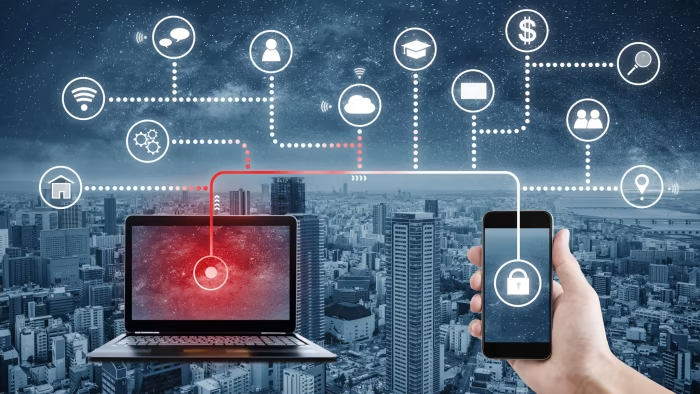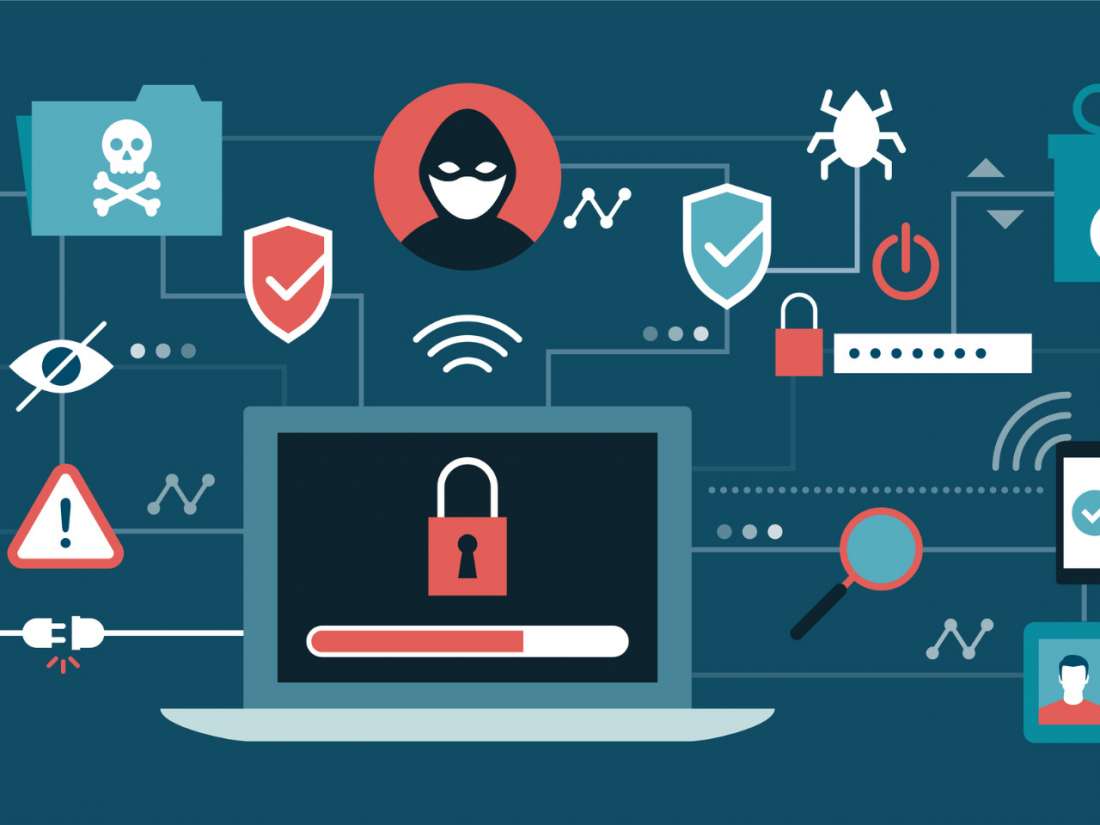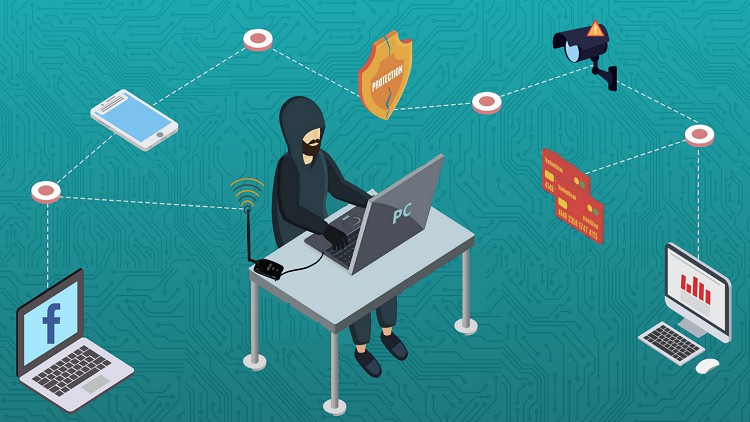Network Security Testing Services
Basics of VAPT Frequency
At Valency Networks, we understand the critical importance of determining the optimal frequency for conducting Vulnerability Assessment and Penetration Testing (VAPT) to maintain robust cybersecurity defenses. Our expertise lies in helping organizations navigate the complex landscape of security threats and vulnerabilities effectively. When it comes to VAPT, finding the right balance between security needs and operational constraints is paramount.

Regular VAPT assessments are essential to proactively identify and mitigate security vulnerabilities before they can be exploited by malicious actors. We recommend conducting VAPT assessments at regular intervals, with the frequency tailored to the unique risk profile and security requirements of each organization. Factors such as industry regulations, risk tolerance, system changes, and the evolving threat landscape all play a role in determining the appropriate VAPT frequency.
For organizations operating in highly regulated industries such as finance, healthcare, or government, compliance mandates may dictate specific intervals for conducting VAPT assessments. Our team at Valency Networks stays abreast of the latest regulatory requirements to ensure that our clients remain compliant while enhancing their cybersecurity posture. Additionally, organizations with a high risk profile or a history of security incidents may benefit from more frequent VAPT assessments to mitigate potential risks effectively.
It's essential to recognize that the threat landscape is constantly evolving, with cyber attackers becoming increasingly sophisticated in their tactics and techniques. As such, regular VAPT assessments are critical for staying ahead of emerging threats and vulnerabilities. By conducting VAPT assessments at appropriate intervals, organizations can identify and remediate security weaknesses promptly, reducing the likelihood of successful cyber attacks and minimizing potential impact on business operations.
At Valency Networks, we leverage industry-leading tools, methodologies, and expertise to conduct comprehensive VAPT assessments tailored to our clients' needs. Our team of skilled cybersecurity professionals works closely with clients to develop customized assessment plans and recommend the optimal frequency for conducting VAPT. Whether it's quarterly, bi-annually, or annually, we help organizations strike the right balance between security and operational efficiency to achieve their cybersecurity goals effectively.
Regularity in VAPT is the key
At Valency Networks, we firmly believe that regularity in Vulnerability Assessment and Penetration Testing (VAPT) is the key to maintaining robust cybersecurity defenses. Our extensive experience in the field has taught us that cybersecurity is not a one-time endeavor but an ongoing process that requires continuous vigilance and proactive measures. By conducting VAPT assessments at regular intervals, organizations can stay ahead of evolving threats and vulnerabilities, safeguarding their critical assets and data from potential breaches.Regular VAPT assessments enable organizations to identify and address security weaknesses before they can be exploited by malicious actors. With the cybersecurity landscape constantly evolving and cyber threats becoming more sophisticated, conducting VAPT assessments at regular intervals is essential for staying one step ahead of attackers. By proactively identifying and mitigating vulnerabilities, organizations can reduce the risk of successful cyber attacks and minimize potential damage to their systems, networks, and reputation.
At Valency Networks, we work closely with our clients to develop customized VAPT assessment plans tailored to their unique needs and risk profiles. Whether it's quarterly, bi-annually, or annually, we help organizations determine the optimal frequency for conducting VAPT assessments based on factors such as industry regulations, risk tolerance, and the evolving threat landscape. Our goal is to empower organizations to take proactive measures to enhance their cybersecurity posture and protect against emerging threats effectively.
In today's dynamic and interconnected digital landscape, regularity in VAPT is not just a best practice but a necessity for organizations looking to safeguard their assets and maintain trust with their stakeholders. By embracing regular VAPT assessments as a fundamental component of their cybersecurity strategy, organizations can stay resilient in the face of evolving cyber threats and demonstrate their commitment to maintaining a secure and trusted environment for their customers, partners, and employees.
VAPT Frequency Statistics
While specific statistics on VAPT frequency may vary based on industry, organizational size, and regulatory requirements, several studies and surveys provide insights into common practices and trends:
1. Annual Frequency :
According to a survey conducted by Ponemon Institute, around 62% of organizations conduct penetration testing annually. This indicates that an annual frequency is a prevalent practice among organizations looking to maintain cybersecurity resilience.

2. Quarterly Frequency:
A report by Cybrary found that 18% of organizations conduct penetration testing on a quarterly basis. This suggests that some organizations opt for a more frequent approach, conducting assessments every three months to stay ahead of emerging threats.
3. Bi-Annual Frequency:
Another study by ISACA revealed that 12% of organizations conduct penetration testing twice a year, indicating a bi-annual frequency. This approach allows organizations to balance the need for regular assessments with resource constraints and operational considerations.
4. Ad-Hoc Frequency:
While regular assessments are recommended, some organizations may conduct penetration testing on an ad-hoc basis in response to specific events, such as significant system changes, security incidents, or compliance requirements. According to the Ponemon Institute survey, around 8% of organizations follow an ad-hoc approach to penetration testing.
5. Compliance-driven Frequency:
Regulatory requirements play a significant role in determining VAPT frequency for many organizations. Compliance mandates such as PCI DSS, HIPAA, and GDPR often stipulate specific intervals for conducting security assessments. For example, PCI DSS requires annual penetration testing for compliance certification.
6. Monthly Frequency:
While less common than annual or quarterly assessments, some organizations opt for monthly penetration testing to maintain a high level of security readiness. According to a survey by Osterman Research, approximately 5% of organizations conduct penetration testing on a monthly basis.
7. Bi-Weekly or Weekly Frequency:
In highly regulated industries or organizations with stringent security requirements, some may choose to conduct penetration testing more frequently, such as bi-weekly or weekly assessments. While less common, these organizations prioritize continuous monitoring and rapid response to emerging threats.
8. Non-Compliant Organizations:
According to the Cybrary survey, approximately 15% of organizations do not conduct penetration testing at all, indicating a significant portion of entities that may be vulnerable to cyber threats due to a lack of regular security assessments.
9. Global Variations:
Penetration testing frequency may vary by region and industry sector. For example, a study by Trustwave found that in the Asia-Pacific region, 68% of organizations conduct penetration testing annually, compared to 52% in North America and 47% in Europe, indicating regional differences in security practices.
10. Industry-Specific Trends:
Certain industries may have unique VAPT frequency patterns based on their risk profiles and regulatory environments. For example, the financial services sector often conducts more frequent assessments due to the high volume of sensitive data and regulatory scrutiny.
11. Trend Over Time:
There is a growing trend towards increased frequency of penetration testing among organizations globally. With cyber threats becoming more sophisticated and prevalent, many organizations are recognizing the importance of regular assessments to mitigate risks effectively.
These statistics highlight the diverse approaches to VAPT frequency adopted by organizations worldwide. While there is no one-size-fits-all solution, organizations should assess their specific risk factors, compliance requirements, and operational considerations to determine the optimal frequency for conducting penetration testing. Regular assessments are essential for maintaining cybersecurity resilience and protecting against evolving threats in today's digital landscape.
Overall, while there is no one-size-fits-all approach to VAPT frequency, organizations should consider their risk profile, regulatory requirements, industry best practices, and resource constraints when determining the appropriate frequency for conducting assessments. Regular assessments, whether annual, quarterly, or bi-annual, are essential for maintaining robust cybersecurity defenses and protecting against evolving threats.
VAPT Frequency Research Stats
Here are some statistics based on surveys and researches conducted on VAPT frequency:
1. Annual Frequency :
According to the 2021 Cybersecurity Insights Report by Trustwave, 67% of organizations conduct penetration testing at least once a year.
2. Quarterly Frequency:
A survey by SecurityMetrics found that 20% of organizations conduct penetration testing on a quarterly basis to ensure ongoing security.
3. Regulatory Compliance:
The 2020 Global Compliance Report by Tripwire revealed that 68% of organizations conduct penetration testing as part of their compliance initiatives, with 42% performing tests annually.
4. Industry Trends:
Research by the Ponemon Institute found that 64% of organizations in the healthcare sector conduct penetration testing annually, compared to 59% in the financial services sector and 52% in the retail sector.
5. Frequency by Company Size:
The 2020 State of Penetration Testing Report by Cobalt.io showed that 75% of large enterprises (over 1,000 employees) conduct penetration testing annually, while 56% of small and medium-sized enterprises (SMEs) conduct tests annually.
6. Adoption Trends:
A survey conducted by Cybersecurity Insiders in 2020 found that 87% of organizations have adopted penetration testing as part of their cybersecurity strategy, with 32% conducting tests quarterly and 22% conducting tests annually.
7. Frequency Over Time:
The 2021 State of Penetration Testing Report by HackerOne noted a 21% increase in the frequency of penetration testing compared to the previous year, indicating a growing recognition of its importance in cybersecurity.
These statistics provide insights into the prevalence and trends of VAPT frequency among organizations globally, highlighting the importance of regular assessments in maintaining robust cybersecurity defenses.
What decides Pentesting Frequency?
When considering the frequency at which Vulnerability Assessment and Penetration Testing (VAPT) should be conducted, several key factors come into play. Here are some points to consider when determining the appropriate frequency for VAPT:
1. Regulatory Requirements :
Compliance regulations such as GDPR, PCI DSS, HIPAA, and others may mandate regular security assessments, including VAPT, at specified intervals. Ensure that your organization's VAPT frequency aligns with relevant regulatory requirements.

2. Industry Best Practices:
Follow industry best practices and standards to determine VAPT frequency. Organizations in sectors with high security risks, such as finance, healthcare, and government, may require more frequent VAPT assessments compared to others.
3. Risk Profile:
Assess your organization's risk profile, including factors such as the sensitivity of data, the criticality of systems and applications, and the likelihood and potential impact of security breaches. Higher risk profiles may necessitate more frequent VAPT assessments.
4. System Changes:
Consider the frequency of changes to your organization's systems, networks, applications, and infrastructure. New deployments, updates, patches, configurations, or changes in the IT environment can introduce new vulnerabilities that need to be assessed through VAPT.
5. Threat Landscape:
Stay informed about the evolving threat landscape and emerging cyber threats relevant to your industry and organization. Increasingly sophisticated cyber attacks may require more frequent VAPT assessments to ensure readiness against evolving threats.
6. Previous Incidents:
Learn from past security incidents, breaches, or vulnerabilities discovered through VAPT assessments. If previous assessments have uncovered significant vulnerabilities or weaknesses, consider increasing the frequency of VAPT to mitigate future risks.
7. Budget and Resources:
Evaluate your organization's budget and resource constraints when determining VAPT frequency. Balancing the need for security with available resources is essential to ensure effective and sustainable security practices.
8. Business Continuity:
Consider the potential impact of security breaches on business operations, reputation, and financial stability. Conducting VAPT assessments at appropriate intervals can help maintain business continuity and minimize the risk of disruptions due to security incidents.
9. Emerging Technologies:
Keep abreast of emerging technologies and trends that may impact your organization's security posture. New technologies such as cloud computing, IoT, and mobile devices may introduce unique security challenges that require regular VAPT assessments.
10. Continuous Monitoring:
Implement continuous monitoring capabilities to detect and respond to security threats in real-time. While periodic VAPT assessments are essential, continuous monitoring can provide ongoing visibility into your organization's security posture and help identify and mitigate threats proactively.
How often should a VAPT be performed?
Determining the optimal frequency for conducting Vulnerability Assessment and Penetration Testing (VAPT) is a critical aspect of maintaining robust cybersecurity defenses. At Valency Networks, we recognize that there is no one-size-fits-all answer to this question, as the appropriate frequency varies based on factors such as industry regulations, risk tolerance, and the evolving threat landscape. However, we recommend that organizations conduct VAPT assessments at least annually to ensure ongoing security and compliance.
Annual VAPT assessments serve as a baseline for identifying and addressing security vulnerabilities across systems, networks, and applications. By conducting assessments on an annual basis, organizations can proactively identify and mitigate potential risks before they can be exploited by cyber attackers. Additionally, annual assessments help organizations comply with regulatory requirements and industry standards that mandate regular security testing.
In some cases, organizations may opt for more frequent VAPT assessments based on their risk profile and operational needs. For example, industries with high security risks, such as finance, healthcare, and government, may choose to conduct VAPT assessments more frequently, such as quarterly or bi-annually, to stay ahead of emerging threats. Similarly, organizations undergoing significant system changes or experiencing a high volume of cyber threats may benefit from more frequent assessments to ensure continuous security monitoring and rapid response to evolving risks.
Ultimately, the frequency of VAPT assessments should be tailored to the specific needs and priorities of each organization. At Valency Networks, we work closely with our clients to develop customized VAPT assessment plans that align with their risk profile, compliance requirements, and operational constraints. Whether it's annual, quarterly, or bi-annual assessments, our goal is to empower organizations to maintain a strong cybersecurity posture and protect against evolving threats effectively.
What is recommended VAPT frequency?
Below is a table outlining the ideal and practical time limits for conducting Vulnerability Assessment and Penetration Testing (VAPT) for various types of applications and environments, considering both small and large-scale deployments:
| Application / Environment (Size) | Ideal Frequency | Practical Frequency |
|---|---|---|
| Web Applications (Small) | Quarterly | Bi-annually |
| Web Applications (Large) | Quarterly | Bi-annually |
| Networks (Small) | Quarterly | Annually |
| Networks (Large) | Quarterly | Annually |
| REST APIs (Small) | Quarterly | Bi-annually |
| REST APIs (Large) | Quarterly | Bi-annually |
| Mobile Applications (Small) | Quarterly | Bi-annually |
| Mobile Applications (Large) | Quarterly | Bi-annually |
| Cloud Applications (Small) | Bi-annually | Annually |
| Cloud Applications (Large) | Bi-annually | Annually |
| IoT Applications (Small) | Bi-annually | Annually |
| IoT Applications (Large) | Bi-annually | Annually |
| Kubernetes Clusters (Small) | Quarterly | Bi-annually |
| Kubernetes Clusters (Large) | Quarterly | Bi-annually |
| Operational Technology (OT) | Bi-annually | Annually |
Ramifications of missing VAPT Frequency
The repercussions of neglecting or missing Vulnerability Assessment and Penetration Testing (VAPT) at the recommended frequency can be severe and far-reaching, affecting various aspects of an organization's operations, reputation, and bottom line. At Valency Networks, we understand the critical importance of regular VAPT assessments in safeguarding against evolving cyber threats, and we emphasize the potential ramifications that arise from failing to adhere to a proactive security posture.
First and foremost, one of the most significant ramifications of missing VAPT frequency is the increased vulnerability to cyber attacks.

Without regular assessments to identify and mitigate security weaknesses, organizations become susceptible to exploitation by malicious actors seeking to infiltrate systems, steal sensitive data, or disrupt operations. The longer vulnerabilities go undetected, the greater the likelihood of a successful cyber attack, leading to potential financial losses, legal liabilities, and damage to reputation.
Additionally, missing VAPT frequency can result in non-compliance with regulatory requirements and industry standards. Many regulatory frameworks mandate regular security testing, including VAPT assessments, to ensure the protection of sensitive information and mitigate the risk of data breaches. Failure to comply with these regulations can result in fines, legal penalties, and reputational damage, undermining trust with customers, partners, and stakeholders.
Furthermore, the absence of regular VAPT assessments can hinder an organization's ability to maintain a proactive security posture and stay ahead of emerging threats. Cyber threats are continually evolving, and new vulnerabilities are discovered regularly. Without ongoing assessments to detect and address these vulnerabilities, organizations risk falling behind in their cybersecurity defenses, leaving them vulnerable to sophisticated cyber attacks that exploit unpatched vulnerabilities.
Moreover, missing VAPT frequency can have cascading effects on business operations, leading to disruptions, downtime, and loss of productivity. A successful cyber attack resulting from overlooked vulnerabilities can disrupt critical systems and services, causing financial losses, reputational damage, and erosion of customer trust. Additionally, organizations may incur expenses related to incident response, remediation efforts, and regulatory compliance, further exacerbating the impact on the bottom line.
In summary, the ramifications of missing VAPT frequency extend beyond just cybersecurity concerns and can have profound implications for an organization's overall resilience, compliance posture, and business continuity. By prioritizing regular VAPT assessments and adhering to recommended frequency guidelines, organizations can mitigate these risks and proactively safeguard their assets, data, and reputation against cyber threats.
Valency Networks VAPT Services
At Valency Networks, our VAPT services are designed to empower organizations with proactive cybersecurity measures that prioritize the maintenance of optimal assessment frequency. Through our comprehensive suite of VAPT offerings, we assist clients in fortifying their defenses against evolving cyber threats while ensuring adherence to recommended assessment intervals. Central to our approach is the concept of KaiZen, a Japanese philosophy of continuous improvement. We apply this principle to our VAPT services, emphasizing the importance of ongoing refinement and enhancement to security practices.

Crucially, we recognize that maintaining the frequency of VAPT assessments is essential for staying ahead of emerging threats and mitigating security risks effectively. To this end, we work closely with our clients to establish customized assessment schedules that align with industry best practices, regulatory requirements, and organizational objectives. Through regular communication and collaboration, we ensure that VAPT assessments are conducted at the appropriate intervals, enabling clients to proactively address security vulnerabilities and maintain a strong cybersecurity posture.
Furthermore, our KaiZen-inspired approach emphasizes continuous learning and adaptation, enabling us to evolve alongside the ever-changing threat landscape. We continually monitor industry trends, emerging threats, and evolving technologies, incorporating new insights and best practices into our VAPT services to enhance their effectiveness. By embracing a culture of continuous improvement, we empower our clients to navigate the complexities of cybersecurity with confidence and resilience.
In summary, Valency Networks' VAPT services are characterized by our commitment to maintaining the frequency of assessments through the KaiZen philosophy of continuous improvement. By partnering with us, organizations can benefit from proactive cybersecurity measures that prioritize ongoing refinement, adaptation, and optimization, enabling them to safeguard their assets, data, and reputation against evolving cyber threats effectively.


